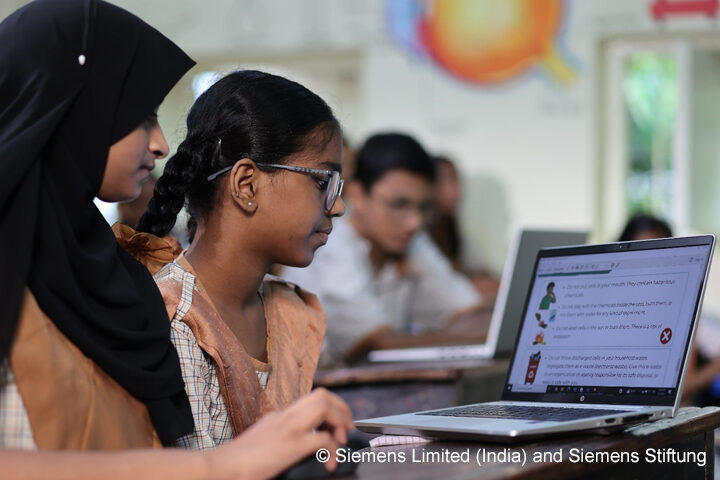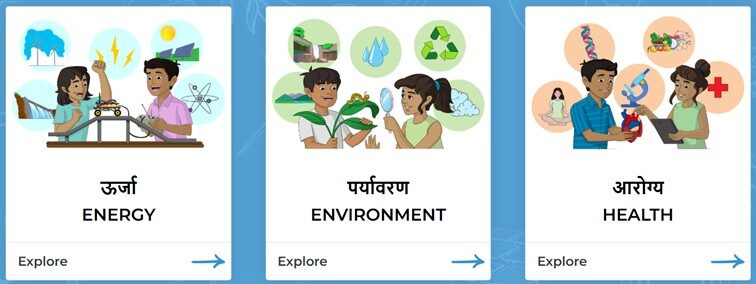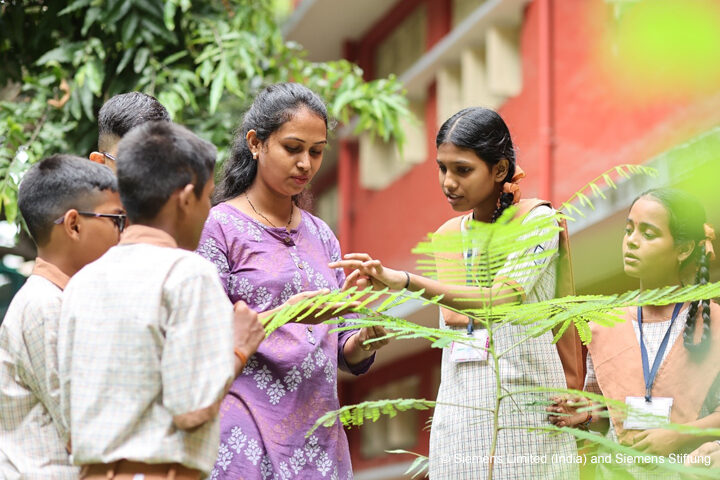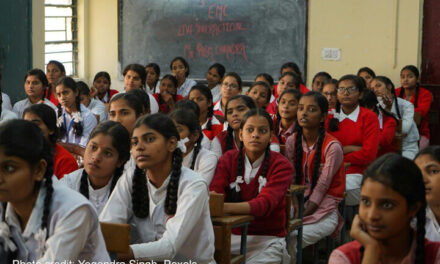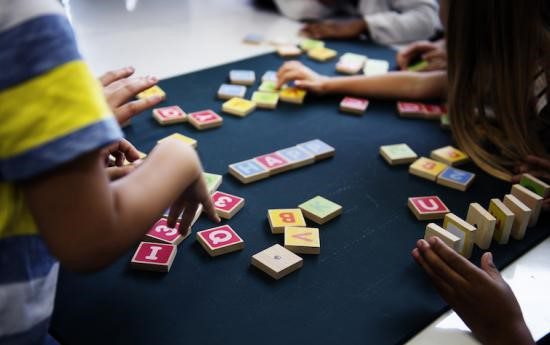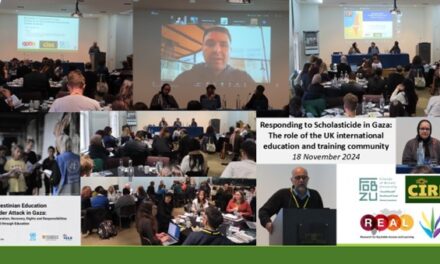This blog was written by Rajat Bagga, Senior Project Manager, and Dr Barbara Filtzinger, Head, Education Team at Siemens Stiftung (Foundation), Munich.
In a world where technology evolves rapidly, our school systems often feel stuck in time. Inside classrooms, students are expected to memorise facts and copy diagrams, hoping it will prepare them for the future. But does it truly help them understand the world around them?
This gap is especially visible in science education in Indian schools. Many young learners find science abstract and intimidating, disconnected from their daily lives. Despite producing one of the world’s largest numbers of STEM (Science, Technology, Engineering and Mathematics) graduates, India has yet to fully harness its STEM potential at the school level. The National Achievement Survey shows average science scores in Grade 8 hovering around 250 out of 500, a sign of both underperformance and disengagement.
So as educators, we need to ask: How can we make science simple, accessible and relevant for school students?
Bringing science to life with digital resources
To address this challenge, Siemens Stiftung, with over 15 years of international experience; Siemens Limited (India), a world leader in technology; and Pratham Education Foundation, one of India’s largest NGOs, joined hands to co-create over 200 digital science resources tailored for Indian schools. These hands-on, inquiry-based materials are freely available online, making them accessible to educators and students across India.
This project brings together the complementary strengths of three organisations, both international and local. This project, STEM Education for Innovation: Experimento India, focuses on themes like energy, environment and health. These digital resources encourage students to observe, inquire and discuss, turning science from abstract theory into a hands-on adventure. The project advances Siemens Stiftung’s position on digitality, by providing access to quality education to students from low-income communities to foster educational justice and equity. Here are four examples of how we made science come alive:
Example 1: Investigating air pollution using Google Maps
Delhi’s air pollution spikes in winter. Instead of only reading about air pollution, what if students could investigate it themselves using Google Maps, a tool they are already familiar with? In this resource, students learn to observe Air Quality Index data around their homes and schools, track it over time, and compare with other cities and rural areas. They discuss questions like: Why is pollution worse on some days? What affects air quality in our neighbourhood? What can we do to improve it? Through this process, students aren’t just memorising facts; they are investigating, analysing and discussing real-world problems, turning science into a tool to understand and improve their world.
Example 2: Learning the greenhouse effect with everyday materials
Science experiments often feel out of reach without lab equipment. But what if students could explore science at home with simple materials? In this resource, students learn about the greenhouse effect using glass jars, plastic wrap, ice cubes and sunlight or a lamp. They create “mini atmospheres” to observe how greenhouse gases trap heat on Earth, making the concept of global warming tangible, accessible, and memorable.
Example 3: Exploring circuits through play
Playing with friends is fun; learning circuits in a classroom often isn’t. What if students could learn about series and parallel circuits while playing outdoors? In this resource, students use buckets, mugs and water to model series and parallel circuits while playing outdoors, showing how electricity can take multiple paths and continue even if one path is blocked. They see and feel how electricity flows, experiment with changes and understand concepts in a way that is fun and memorable.
Example 4: Understanding waste segregation through community audits
Waste management is a major challenge in India, from Delhi’s mountains of waste, to Mumbai’s vast dumping grounds. How do we sensitise students on this topic? Our resources enable students to conduct community waste audits, interview sanitation workers and discuss challenges and solutions around waste segregation. Even parents and teachers join, transforming these explorations into community-driven initiatives for better waste management. Students develop a practical understanding and sense of agency, seeing how small actions can create real impact.
What we have learnt and practiced?
Supplement, don’t compete. Government school teachers in India work under tight timelines to complete the curriculum. Our resources are designed to supplement, not add to, this workload. By aligning activities with the existing curriculum outlined in India’s National Curriculum Framework and replacing static diagrams with dynamic, real-world explorations, we help deepen students’ understanding of classroom topics.
Connect science with everyday life. Our resources enable students to relate science to their daily lives—like understanding circuits by observing a faulty bulb at home. They learn by doing, observing and discussing real-world issues. By involving parents in activities like community audits, we show that science extends beyond classrooms into homes and communities.
Embed inclusion in design. India’s diversity is its strength. Our resources are culturally sensitive, gender-responsive and inclusive, ensuring every child feels seen, respected and encouraged to engage in science learning, regardless of background.
Ensure equitable access. To reach learners across socio-economic divides, we made all our digital resources freely available under a Creative Commons license in multiple formats—videos, audios, manuals, worksheets and games. Available in several Indian languages, and supported by teacher training in underserved communities, these resources bring quality science learning to the students who need it most.
Does this approach work?
Yes, and we have the data to show it. In a comparative study across three settings—teacher-led classrooms, parent-supported learning at home and self-guided student use—assessments showed that student scores improved significantly in science knowledge and skills. Teacher feedback also confirmed: students not only learned, they also enjoyed it.
What’s next
Our journey has just begun. By 2028, we aim to bring hands-on, inquiry-based digital science learning to over 55,000 students across India, with a focus on Indian states such as Maharashtra, Gujarat, Karnataka, Goa, Haryana, West Bengal and Tamil Nadu. Alongside teacher training, we will engage and orient parents to extend learning practices at home, building a supportive ecosystem around the child.
This project directly aligns with the vision of India’s National Education Policy, which emphasises quality STEM education early on, while also promoting the use of digital tools to enhance learning.
We are actively seeking partnerships with public and private organisations to scale this impact. If you believe students in your network could benefit from these resources, we invite you to connect with us. Together, we can ensure that even the most marginalised learners in India gain access to engaging, high-quality science education.
Imagine the STEM potential we can unlock if every child in India learns well, learns early and learns with joy.
Let’s make science come alive – one step, one experiment and one curious mind at a time.
Watch the video to learn more.

